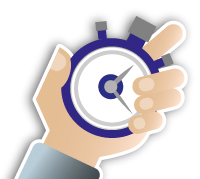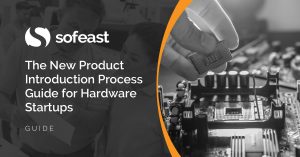 About 2 months ago, I posted a video about the steps to make a customized product in China. I noted that most of the steps outlined in that video don’t apply when the importer is buying simple products that don’t require serious customization.
About 2 months ago, I posted a video about the steps to make a customized product in China. I noted that most of the steps outlined in that video don’t apply when the importer is buying simple products that don’t require serious customization.
For what is generally called “standard” or “off the shelf” products, there are 3 steps and they are relatively simple:
(It is on Youtube… Blocked behind the great firewall.)
If I had to sum it up, it would be “get the basics right, and that can take a lot of work in itself”. The most important steps are:
- Working with the right supplier, and not getting steered toward “too cheap” suppliers.
- Setting up the “magic triangle“: product specifications, sample reviews, and QC inspections.
What do you think?
—
TRANSCRIPT:
Introduction
Welcome to this video where we will be discussing the steps involved with the procurement process for STANDARD products that do not need a lot of modifications done to them. For example, a catalogue product that may require alternative branding or packaging for example.
The process has just 3 phases which cover Partner Selection through to Production & Shipping
- Phase 1 – Partner Selection
- Phase 2 – Pre Production
- Phase 3 – Production
This is the complete FLOW CHART, which is too difficult to see in detail, so in order help better understand each of the steps we have separated out the elements in each of the Phases.
Phase 1 – Supplier Selection
So let’s look at the Supplier Selection Phase
Initially, you would need to define your product specification sheet. The purpose of this document is to provide information about the actual product and specifications that you need that product to meet as well as any specific changes to the standard product you require, such as logo’s, packaging, instructions and so on.
The next step is to research and find a list of potential suppliers that can produce and supply the product you are looking.
It is important to build a comprehensive detail list or tracking document which include supplier’s name, address and contact details as well as any other information you can find such as how long have they been in business, this will help later on when you carry out your due diligence
Once you have your list of potential suppliers you should contact them and send out a Request For Quotation. This RFQ should include your expected monthly or annual volumes, modification requirements, packaging requirements, and any other specific requirements you may need.
When you get the information back from those suppliers, make sure you add all the relevant details to your tracking document. This will allow you to review and analyse the data in order for you to identify the top 3 potential suppliers for you to move forward with.
It is paramount that you carry out due diligence on your potential suppliers, this should include, but not limited to:
- Researching the suppliers online and if possible pay for in-depth background research on that supplier
- Verify that the supplier can supply any documents that you might need and that they are authorized to supply those documents
- Determine how QC is carried out by the supplier and how you might integrate an external QC auditor into that process
Once you have carried out your due diligence, it is now time to order samples from your top 3 suppliers to verify product details, functionality and quality levels against your expectations.
It is important to spend time really testing the product in order to try and identify any weak points in the design and to find any potential failure modes that may occur which could cause problems for your customers and ultimately you as the seller.
After all the testing you should have all the samples ranked in order of preference and consequently the corresponding suppliers in a ranked order as well.
Phase 2 – Pre-production
The next Phase is the Pre-production phase.
This is where all the activities take place prior to the actual product is manufactured, which include:
- Factory audits
- Control plans
- And purchase order and initial payments
It is highly recommended that you visit the supplier’s premises or get a third party inspection agency do this on your behalf – never part with any money until this is complete.
Auditors usually check a factory for capacity and reliability and they normally verify the following:
- The facilities and equipment (can they make this product, and do they have the capacity to complete an order in a reasonable amount of time?)
- They look at the systems and check to see if there are any dangerous practices, for example, they never check the components from their suppliers.
- As well as checking the basic information such as the size of the company, the main products they produce and did their salespeople tell their truth basically.
Every manufacturing process should have a process control plan and this is something you need to generate in conjunction with your supply partner.
Be sure that suppliers ‘buy into’ the control plan, which should include the relevant Acceptable Quality Levels.
The next step is to place the purchase order for your products with the selected supplier.
This means you will need to pay a deposit generally around 30% of the purchase order.
You should also discuss with your supplier about a communication plan during production.
Phase three – Production
Phase three, the last Phase is Production
The Production Phase consists of the process of manufacturing your products, ensuring they are acceptable to be shipped and then shipping products to the final destination.
It is paramount that you follow up with your supplier throughout the entire production process and obtain regular progress reports.
Product inspection is a critical step within the overall process. You can either opt for a during production inspection or wait until everything has been completed and carry out a final random inspection, or you could have both of them, but anyway, you need to have your goods inspected before they leave the factory and certainly before you pay the balance on any purchase order.
Carrying out an inspection while goods are still at the factory allows you to work with your supplier on any required corrective actions. Because once those products leave the factory you have very little come back with that supplier.
Once the product has been inspected and approved and you are happy with the results, you should sign off production as acceptable with that supplier.
This means that product can be prepared for shipping.
This also indicates it’s a milestone in the process where the product is OK and final payments would need to be paid.
The final step in this phase is to ship your products to the final destination and how you do this would depend upon a number of different factors such as:
- Size of your product
- Weight of your product
- Does the product contain hazardous materials
- Are you importing batteries
- Among a host of other criteria
However you ship your products, ensure you understand the process fully particularly what paperwork is required. There are specialist third-party companies that can help you with this process if you are unsure on how to do it yourself.
Recap of Entire Process
So just to recap the entire process.
Phase 1 – Supplier Selection:
- This includes defining your specification sheet,
- Identifying potential suppliers,
- Getting quotations,
- Then carrying out your due diligence on the suppliers you have as the top 3.
- You can then get samples from these suppliers in order to check and test their products.
Phase 2 – Pre-production:
- This includes carrying out a factory audit,
- Defining your control plan for production,
- Placing the purchase order
- Paying the initial deposit for production
Phase 3 – Production
- Which includes the follow up throughout the production process with your supplier
- Getting products inspected (and corrected if needed)
- Approving production parts and signing them off as acceptable
- This leads into the final payment of the balance
- And finally, logistics, getting your products from China to the place you need them
We hope you found this of interest and it has help within your business.
If you have any comments please leave them below and we will be sure to come back to you.
Interested in learning more about the new product introduction process for hardware startups?
Sofeast’s guide covers everything hardware startups need to know for making a new product in China and successfully bringing it to market.
Hit the button below to read the guide:

